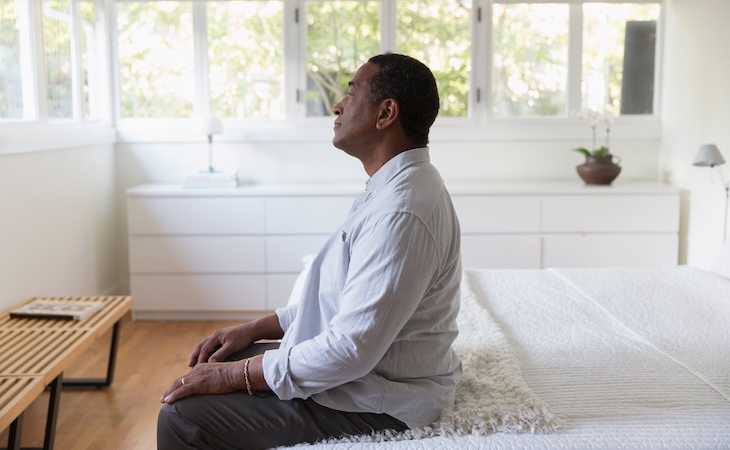If you’re an astrology enthusiast like me, then you’ve probably looked at your birth chart several times in your life to figure out everything about yourself—your relationships, your communication style, your basic tendencies (I’m very much an emotional Pisces), and so much more.
And while there’s so much to take in from astrology when it comes to learning about yourself, I most recently discovered something that’s a lot more nuanced when it comes to self-reflection—and that’s your human design. But what exactly is it—and can knowing your human design type help you sleep better?
What is human design?
Ever wondered why you need to always take a nap in the middle of the day, while your best friend can go, go, go without so much as pausing for a breath? How about why you need tons of sound and stimulation to enjoy a fun meal out, while your partner prefers quiet restaurants or eating at home?
While these nuances in our personalities might seem random, according to human design expert and master coach Emma Dunwoody, it’s all because of your human design blueprint—and yes, we all have one.
“Human design looks at the energies present at the time of our birth, and how we are each uniquely imprinted for life in that moment,” she explains. “It shows us how we best use our energy, how we make decisions, how we find opportunities, and so much more.”
Much like astrological birth charts, human design is a system based on your exact time, date, and place of birth. But unlike your birth chart, it aims to explain every aspect of your personality through a combination of centers, planets, numerology, and more. It’ll show you how best you eat, sleep, find and maintain relationships, and even work, says Dunwoody.
“Human design is similar to personality profiling tools like enneagram or Myers-Briggs, but instead of taking tests to find it—which would give you a more subjective viewpoint and change based on your emotions—human design is a synthesis of ancient wisdom and modern science (astrology, the Hindu Chakra system, the Kabbalah Tree of Life, the Chinese iChing, and quantum physics) that uses your birth date and time to generate a more objective result,” she explains.
To find your own unique human design blueprint, you can insert your date, place, and time of birth onto any of the following websites: My Human Design, myBodyGraph, or Human Design Blueprint. From there, you’ll be able to access your own human design chart and see everything from your type to your centers and more.
“Human design looks at the energies present at the time of our birth, and how we are each uniquely imprinted for life in that moment. It shows us how we best use our energy, how we make decisions, how we find opportunities, and so much more.”
Emma Dunwoody, human design expert and master coach
What are the different human design types?
According to human design, there are five major types, and each one determines how you use your energy—and therefore how best to replenish it.
“Human design has a lot to say about how we use our innate energy and ways to restore it,” says Ilona Barnhart, a human design reader at Four Moons Spa in San Diego. “Once you understand how your unique energy works, you can leverage it and gain the deepest, most satiating, and rejuvenating sleep of your life. There are five energy types in human design, and each uses and replenishes energy uniquely.”
Additionally, your energy type in human design also informs what is called your strategy, your signature, and your not-self theme.
“Your strategy is how you make use of opportunities in your life, your signature is the sign that you’re living in line with your human design, and your not-self theme is the indication or feeling that comes up when you’re not living in accordance with your design,” explains Barnhart.
Here’s a brief explanation of the energy types below.
Manifestor
- Strategy: to inform
- Signature: peace
- Not-self theme: anger
“Manifestors are the go-getters of our community,” says human design reader Krystal Woods. “They are innovative and have tons of new ideas at all times.”
If you’re a manifestor, then you’re definitely more of a leader than a follower—and you desire a sense of autonomy, which means you hate being told what to do. Your strategy as a manifestor is therefore to inform, which means others need to be aware of your plans.
“Manifestors have to be communicative in order to receive that autonomy that they want from others,” adds Woods, “so that they aren’t questioned when they disappear into the abyss to work.”
The sign that you’re living in accordance with your design (signature) is peace, and your not self-theme is therefore anger.
“You’ll get peace and fulfillment from your creations, but if you see others starting your passion projects or feel micromanaged, anger will step in,” says Woods.
Generator
- Strategy: to respond
- Signature: satisfaction
- Not-self theme: frustration
Generators are basically the hustlers of the world, says Barnhart, who adds that they need to be incredibly excited by whatever they’re doing. They can go, go, go all day without getting tired—but unlike manifestors, they shouldn’t be the ones initiating.
“Your strategy as a generator is to respond to the opportunities that are presenting themselves to you, but you should never take anything you’re not excited by,” says Barnhart. “If you do, your not-self theme of frustration will emerge.” If you’re working on something you’re really passionate about though, you’ll get lots of satisfaction from your work.
Manifesting generator
- Strategy: to respond, then inform
- Signature: satisfaction
- Not-self theme: frustration/anger
A mix of manifestors and generators, a manifesting generator can actually multitask beautifully—and they do their best at work that requires them to wear different hats, says Dunwoody.
However, since each day is going to look different, so will their energy—and they may not be able to work the same number of hours each day as a set routine.
In terms of utilizing opportunities, Barnhart adds that it’s a two-pronged approach due to the mix of energies in the manifesting generator.
“Their strategy is to respond and understand whether their gut tells them to go forward,” Barnhart says. “They can inform, too, but that has to come after they’ve responded to the opportunity presented to them.”
When they’re doing this, they will feel content and satisfied. Otherwise, frustration will arise if they stick to simply one task and not honor their ability to love many different things.
Projector
- Strategy: to wait for the invitation
- Signature: success
- Not-self theme: bitterness
Projectors are actually what are called non-energy beings, which means that they derive energy from the people they’re around and don’t have too much of it themselves.
“Projectors are designed to work much fewer hours than everybody else because they require more rest, and they also need to be seen and recognized for the unique perspective they bring to the world,” says Woods.
Projectors don’t need to hustle but instead let people recognize their gifts and invite them to projects, adds Woods. Their signature is success when they’ve received several opportunities from others—but if they feel undervalued or not recognized for everything they bring to the table, their not-self theme of bitterness and resentment comes out.
Reflector
- Strategy: to wait for a lunar cycle
- Signature: surprise
- Not-self theme: disappointment
Also non-energy beings, reflectors are the rarest energy type, and they’re—more than anybody else—affected by their environment. Their energy ebbs and flows according to the moon cycle, and they should honor the days they feel more tired than others.
“Their strategy is to wait for the lunar cycle, which basically means waiting a whole 28 days before deciding whether an opportunity is right for them,” says Woods. “I also suggest they track the stages of the moon, which helps them figure out when they have more energy throughout the month.”
If reflectors are living by their design, then they’ll be surprised every day at how many different opportunities can come their way and how varied their days can be. However, their not-self theme is disappointment, which can occur when they try to keep up with the energy of the world around them.
How can knowing your human design help you sleep better?
Since your energy type essentially informs how you both utilize energy and replenish it, there are some very specific sleep tips you can incorporate in order to get a better, more peaceful rest. Below are the sleep recommendations from the experts, based on your human design type.
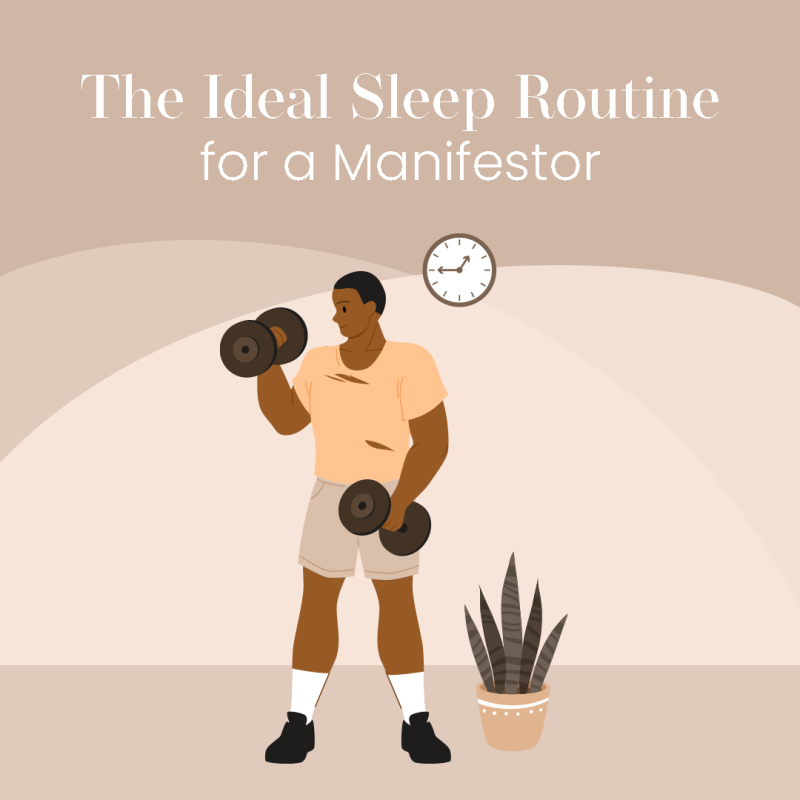
Manifestor sleep tips
“Manifestors typically experience cycles where they have more energy, but then go into ‘rest cycles’ where they need to conserve their energy for the next creative urge,” explains Dunwoody. “It’s important for them to get enough sleep during these cycles, honoring that if they typically need maybe six or seven hours during their high-energy periods, then they might need closer to nine or 10 in their rest periods.”
Dunwoody adds that in those high-energy periods, manifestors have to make sure to entirely exhaust themselves each day in order to get adequate sleep—think things like working out a ton, dancing, socializing, or staying engrossed in a project all day.
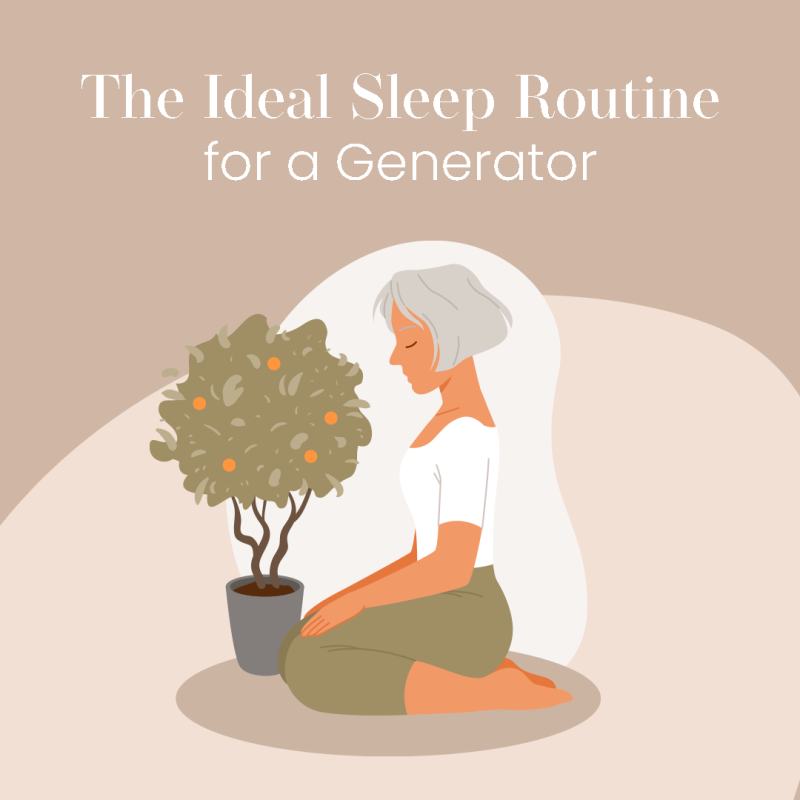
Generator sleep tips
“Generators can be prone to burnout when they use too much of their energy on things that don’t feel good to them or force themselves to keep going even when they don’t have anything left to give,” says Dunwoody. “They can be prone to functional burnout, in particular, because they often are conditioned to use their abundant energy to push past their boundaries, even when the work is not aligned.”
The best sleep tip for them is first to make sure to only do things that bring them joy each day because it’ll allow them to want to fall asleep and replenish their energy, knowing that they’ll get to do it again the next day. They also need a longer wind-down time than most, since they have such go, go energy—they need at least an hour of time to get ready for bed each night without screens or any other kind of work.
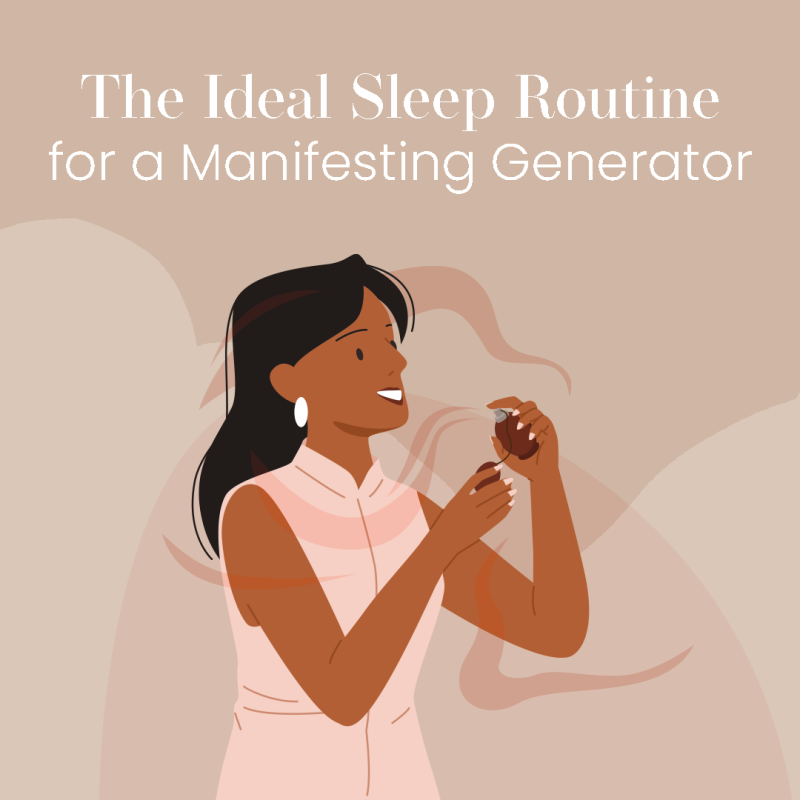
Manifesting generator sleep tips
“Manifesting generators are here to move from interest to interest, collecting skills and combining them, ultimately creating things we’ve never seen before—things yet to come,” says Barnhart.
Therefore, their best sleep tip is to acknowledge their varying interests and energy. They need to sleep more on the days they need it, when the work they’ve done is more stimulating to them, she adds.
Additionally, manifesting generators should also note that these varying interests can apply to their sleep too—they may sleep in pure silence one day and then want to add some white noise another day, for instance, or swap out aromatherapy scents based on their mood. The goal is to honor it all and allow for play, which will also help ensure restful sleep, says Barnhart.
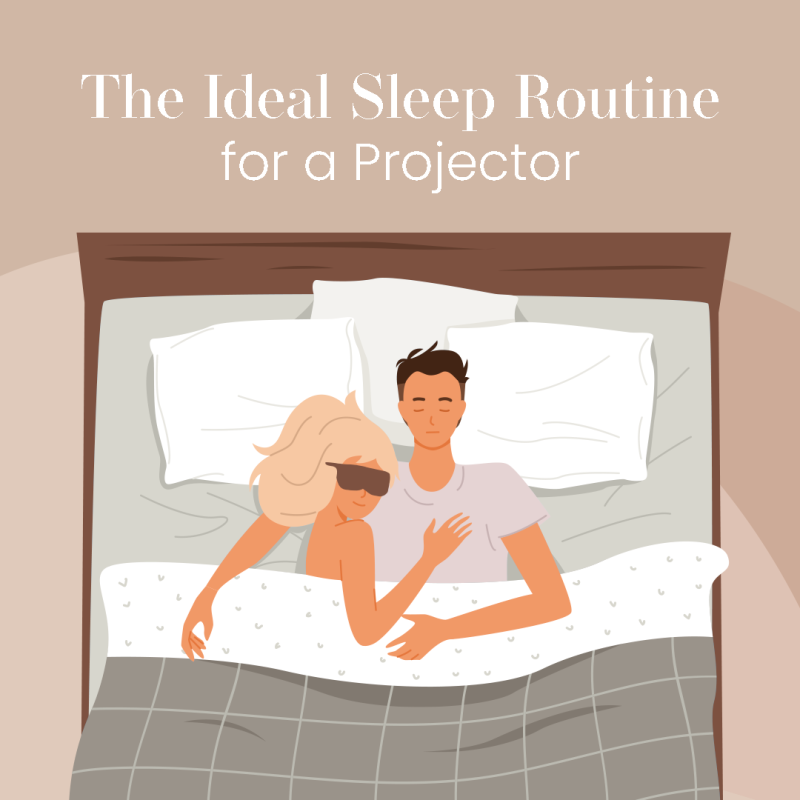
Projector sleep tips
“Projectors are the perfect example of people who are not meant to work an eight-hour day,” says Dunwoody. If you’re a projector, therefore, then Dunwoody says power naps are your friend.
You should also make sure to set aside a lot of time to unwind before you go to bed at night in order to free yourself of the energy that you’ve taken in from other people throughout the day. You also need more sleep than others—nine hours is the ideal number, according to Dunwoody, and this stays stable every day.
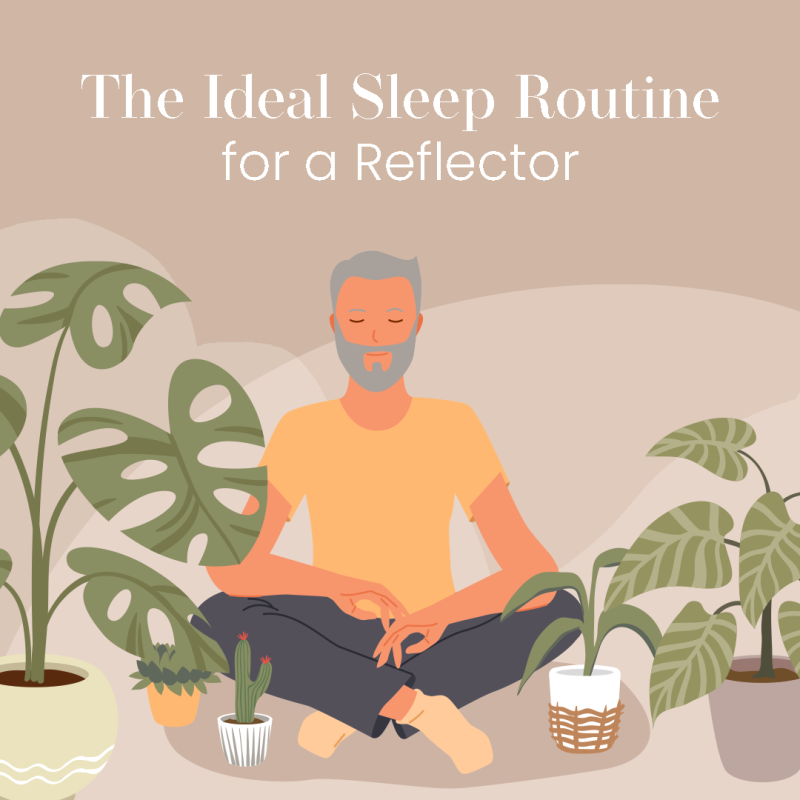
Reflector sleep tips
“Since for reflectors, their energy levels change daily and create a distinct pattern that repeats monthly, the actual number of hours they sleep per night will fluctuate throughout the month,” says Barnhart. “Reflectors replenish best when they spend time around young kids, animals, or in nature, so forest bathing or cold plunges in bodies of water are elixirs for their souls and ensure restful sleep.”
If you’re a reflector, then try to not set an alarm if possible and see how many hours of sleep you need per day, honor its changes, and try cold showers or a nature walk before bed to help you sleep.
FAQs
Is astrology the same as human design?
Well, yes and no. While there are some aspects of human design that involve astrology, it’s not the same, stresses Woods. “Human design actually combines aspects of astrology with the Chakra system, Kabbalah, Myers-Briggs, I-Ching, and biochemistry,” she says. “So while it does map out the planets at the time of your birth, it also uses other aspects, such as channels and gates on the chart, to determine your human design type.”
According to Woods, this actually makes it much more personalized than astrology, giving you more to work with when you’re figuring out the unique way in which you go about the world.
What does my human design type mean?
Your human design chart can actually tell you several different things. Similar to the way your sun sign in astrology tells you one aspect of your personality, your human design type (also known as your energy type) can tell you how to stay the most productive in order to get what you want—basically, how you should best be utilizing your energy each day.
Your energy type also can inform how you best seize opportunities (your strategy), the sign that shows you’re living in alignment with your design (your signature), and the sign that shows you’re out of alignment (your not-self theme).
How can human design benefit me?
“Human design can honestly help you in every area of your life,” says Dunwoody. “It’s a self-knowledge and guidance system that helps us see our unique energetic blueprint: It shows us the energies that lie within us that represent who we are at our most authentic level, like our superpowers, how we’re designed to make decisions, how our intuition works, and the themes of our lives.”
Once you know, for example, how you best rest and digest or how to make decisions that’ll benefit you, you’re then able to apply this information to become the highest version of yourself. According to Dunwoody, once you do this, life will begin to flow a lot easier for you.
What can Ayurveda teach you about your sleep habits? Here’s how to sleep based on your Ayurvedic dosha.



